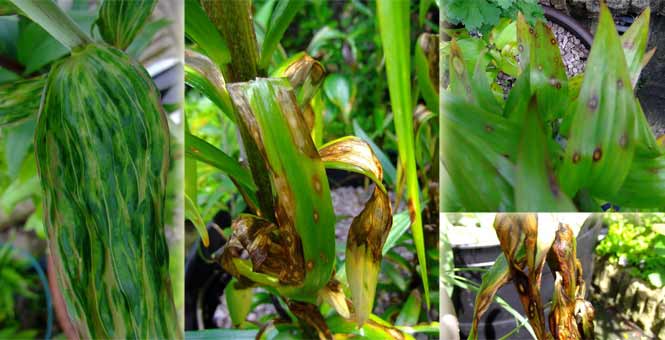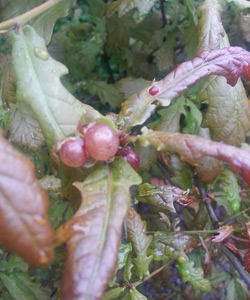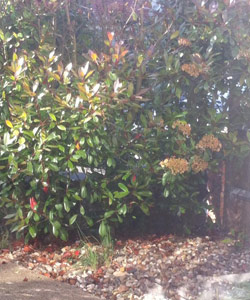- Flowers
Flower Bulbs Allium Bulbs Anemones Begonia Tubers Crocus Bulbs Daffodil Bulbs Dahlia Tubers Hyacinth Bulbs Lily Bulbs Tulip Bulbs Woodland Flower Bulbs Other Flower BulbsFlower Plants Annual Bedding Plants Children's Flower Plants Clematis Climbing Plants Cottage Garden Plants Exotic Plants Flowers For Cutting Plants Foliage Plants Greenhouse & Indoor Plants Ground Cover Plants Hanging Basket Plants Lavender PlantsHardy Geraniums Herbaceous Border Plants Heuchera Pansies and Violas Patio Plants Water Plants Window Box Plants Winter Bedding Plants Hydrangea Large impact plants Recommended By Our Experts
- Fruit & Vegetables
- Trees, Shrubs & Ornamentals
- House Plants
- Tool Shed
Garden Tools & Equipment Barrows and Trolleys Garden Solutions Harvesting Plant Supports Seed Sowing Tree Stakes Water Butts Weed Control Hand Tools Secateurs, Snips and Pruners WorkshopGarden Irrigation & Watering Irrigation Kits Water Butts Hoses & Sprays Miscellaneous Fertilisers Plant Pots Hanging Baskets Plant Protection Garden Compost All Compost
- Outdoor Living
Garden Living Barbecues & Firepits Garden Storage Solar Lights & Lighting Fixtures & Ornaments Awnings Sail Shades Garden Clocks Landscaping Lawn Edging PavingPatio Heaters Gas Patio Heaters Electric Patio Heaters Fire Pits, Chimeneas, Fire Baskets Wallmounted/Ceiling Patio Heaters Freestanding/Table Top Patio Heaters Water Features Solar Powered Water Features Mains Powered Water Features Indoor Water Features Outdoor Water FeaturesGarden Furniture Rattan Furniture Parasols Garden Benches Dining Sets Loungers Wooden Furniture Party Tents & Gazebos
- Wild Birds
- Gardening Info
- Special Offers
Join Our Gardening ClubVan Meuwen Gardening Club
Become a Member
Join our Gardening Club to unlock exciting perks and discounts!
JUST £10 for one year's membership
10% OFF EVERY order placed online £20 worth of Van Meuwen Vouchers Exclusive members only deals Join Now
Facebook Questions and Answers for the 23rd May 2014

Click here to see our previous Q&A sessions.
Hello Facebook fans, thanks for your questions this week, here are Carly's replies:
El Bells
Bought lots of your lily collection unfortunately a few have a virus or spore on their leaves what causes it how do I cure it and do you sell types that cannot get this problem?

Hi El, sorry to see your lilies looking so unhappy. From the photos it looks like there are several things happening. The photo of the streaky leaf is a classic symptom of a virus. There are several which can affect lilies, from tulip breaking virus to cucumber mosaic virus, and all are transmitted by aphids. Unfortunately there is no cure and affected bulbs are unlikely to recover or flower well. The best thing you can do is to remove the whole plant, including the compost it's growing in, and throw it away with general household waste. It's worth noting that as Tulips suffer from this virus too it's best not to plant tulips and lilies together. If you'd like to plant fresh lily bulbs, make sure you wash any pots and use fresh compost from a garden centre. If the lilies are growing in the ground it's best to excavate as much of the roots as you can to avoid infecting new bulbs.
The brown spots and 'scorching' look like lily disease. This fungal disease spreads freely in wet, humid conditions. The best way of preventing it is to grow lilies in sunny, well ventilated positions where the foliage will dry out quickly following rainfall. Also, take care to water directly into the pot and not from overhead. Cut off and burn any severely infected leaves and let the plants die back this year as normal. Destroy any remaining plant debris in autumn. The spores overwinter on the soil surface so I would re-pot them once they have died back to ensure that they are in fresh, clean soil for next year. Unfortunately there are no resistant varieties to either of these diseases.
Also, how do I get rid of mares tails weed? It's all over the garden and patio I only just moved in so there are no plants to consider yet the garden is bare other than the weed.
Horse tail or mare's tail (Equisetum arvense) is a bit of a nuisance! This weed has been around for millions of years and its roots can extend to more than 1.5m deep into the ground. It's a really tough plant that can re-grow from the smallest piece of root. Whatever you do, please don't rotavate the area as you will only spread the plant further still. Cut back as much as you can at ground level and when the new growth emerges use a glyphosate based herbicide such as 'Roundup' or Bayer Garden Super Strength Weedkiller to kill it off; but be warned that you may need to make up to 5 applications before it shows signs of weakening. Keep on top of the problem and spray new growth as soon as it appears, before it reaches (7cm 3") high. Try crushing the stems first to improve the uptake of the weed killer. The idea is to starve the root until it dies, but it will take a lot of persistence on your part. Best of luck with your new garden El, let us know if we can be of any further assistance.
Julie Goodwin
Hi VM and Carly. My 10 year old oak is covered in these. I think they're called galls and if you break them open there's a tiny grub inside. What is it the grub of? Are they harmful to the tree? Also I do keep the tree pruned so will it ever produce acorns? Many thanks.

Hi Julie, you're quite right; these are oak galls, produced by the larval stage of the gall wasp. There are over 30 species of gall wasp which use English oak, producing quite a fascinating range of gall shapes and colours. Fortunately they do very little harm to the tree so there's no need to worry about them. There are no controls available to prevent or treat them. Oaks produce female flowers at the shoot tips in late spring, and male flowers on the previous year's growth. The female flowers are tiny and barely noticeable but male flowers are borne on prominent catkins so you'll be able to tell when your tree is flowering. Light pruning in late June (just after flowering) is probably the best time if you're looking to encourage flowers. Heavy pruning could delay or prevent flowering. Oak trees are naturally quite slow to start producing acorns, even under ideal conditions so it may take some time! I hope this helps Julie, good luck.
Hayley Smart
I have a question... I have recently sown some Echinacea seeds and they are up and growing now, however I have discovered they don't flower for the first year so shall I just grow them in pots in the greenhouse for this year and plant them out next summer? Thanks
Hi Hayley, I would prick out your Echinacea seedlings once they're big enough to handle, into module trays, and keep them in the greenhouse until all risk of frost has passed. I would be tempted to place them outside for the summer as they probably won't like the intense heat and light of the greenhouse during the hottest months. If they grow well they can be further potted up into 9cm pots, and again into bigger pots if needed throughout the summer. Although fully hardy, Echinacea can be tricky when young, seeming to need time to establish before over-wintering well. I would be tempted to group the pots in a cold frame over winter and plant out in their final positions next spring when the weather warms up. I've successfully overwintered young Echinacea this way - just make sure the pots can drain. The key to growing Echinacea is good drainage so make sure you work some organic matter into the soil before planting, particularly if you have clay soil. I hope this helps Hayley, let us know how you get on.
David Looney
Can you take cuttings from a lilac bush and how?
Hi David, you can take cuttings from lilac bushes - now is the ideal time while there is new young growth (taken as softwood cuttings). Prepare some pots by filling with a mix of 50% multipurpose or cuttings compost and 50% perlite (available at all good garden centres) for good air flow and drainage. Collect non-flowering shoots up to 10cm (4") long and trim just below a leaf joint (this is where all the hormones are concentrated for new growth) aiming to make the cutting about 5-10cm (2-4") long. Remove the lower leaves and pinch out the growing tip, before dipping the cutting in rooting hormone powder. Use a dibber (or pencil) to make holes in the compost around the edge of your pot and insert the cuttings into the holes, up to the first set of leaves. Gently water the pots with a fine rose watering can to settle the soil and put them into a clear polythene bag to increase humidity around the plant material. Keep them somewhere warm and bright for six to ten weeks until they start to grow and you notice roots appearing at the bottom of the pot. They are then ready for potting on! Young plants are best kept in their containers over winter - they should have sufficient root growth to plant out next spring. I hope this helps David, best of luck.
Kim Bridger
Can Carly give me any tips to help me get my Wisteria to flower? It has lots of leaves but has not flowered for about 3years and it was only 2-3 flowers? Many thanks.
Hi Kim, there are several reasons why wisterias can fail to flower. Immaturity is one reason, but I would normally expect to see flowers on a mature established plant. Summer drought is often a cause. Make sure that you keep your wisteria well watered from July to September as this is when the flower buds for the following spring begin to develop. I have a wisteria myself and I was astonished at how well it bloomed after I started to give it supplementary water during the summer months. I would also recommend occasional high potash feed which will encourage flower bud development too. The other main cause of poor flowering or failure to flower is incorrect pruning. In winter you should cut back the sideshoots to within two or three buds from where they join the main branches. These will form flowering spurs that will bear the following year's flowers. In summer, tie in the main branches to their supports. Two months after flowering, cut back the sideshoots to about 6 buds from the main branches. With proper pruning and extra water hopefully your wisteria should begin to flower.
Angela Russell
Hi. Could you tell me what this shrub is? It's getting quite large and needs a good prune. It flowers on the previous year's growth so I assume I should prune it after it has flowered but what method should I use?

Hi Angela, this looks like a Photinia. They produce bright red new foliage in the spring and white flowers in late spring. Photinia respond well to hard pruning so you should be able to renovate it successfully, although you may end up forfeiting flowers for a year while the shrub recovers. Photinias can be pruned from mid-spring onwards, although if you enjoy the flowers, wait until after flowering has finished in late May or June. For renovation pruning cut all stems back hard to a low framework and thin out congested shoots as they re-grow. In future years you can keep the growth bushy and under control by trimming each spring or summer, shortening stems by up to 15cm (6") to an outward-facing bud. Take care not to trim any later than mid-August to give any new growth time to harden up before winter. I hope this helps Angela - Photinias are very resilient plants and I feel sure by next year you will have a neat, compact shrub once again!
Sign up to the Van Meuwen Gardener's Club for Special Offers
Delivery Information Privacy Policy Cookies Terms of Business Affiliate Programme Planting & Cultural Advice Contact Us© 2024 Van Meuwen. All rights reserved. A division of Branded Garden Products Limited.
- House Plants
